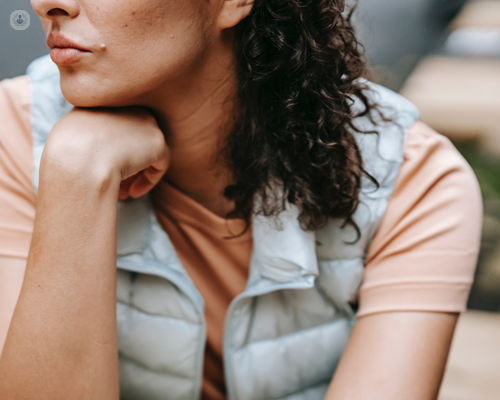An expert guide to hysteroscopy
Written in association with:There are many reasons why a hysteroscopy is required but the prospect of having one can be nerve wracking.
Here to provide a reassuring and detailed guide to what's involved in the procedure is leading London consultant gynaecologist Mr Osama Naji.

What is a hysteroscopy?
A hysteroscopy is a camera test that looks inside the uterus (womb). This camera is inserted over a thin lighted tube through the vagina and the cervix (neck of the womb) to visualise the inside of the uterus. During this test biopsies can be taken of the lining of the uterus (endometrium). In addition, any small polyps or fibroids that are within the cavity of the uterus can be removed. Other benefits include dividing any scarring or adhesions within the cavity of the uterus.
When is a hysteroscopy necessary?
A hysteroscopy is necessary in many situations, for example:
- Irregular or heavy menstrual bleeding;
- Post-menopausal bleeding;
- Suspicion of increased endometrial thickness on ultrasound scan;
- Suspicion of polyps or fibroids arising within the cavity of the uterus on ultrasound scan;
- Suspicion of scarring/adhesions/septum within the cavity of the uterus on ultrasound scan;
- As part of fertility investigations;
What are the different type of hysteroscopy?
- Outpatient hysteroscopy
This is done in the clinic whilst the patient is awake. It is useful for diagnostic purposes as we can visualise the inside of the uterus, as well as take biopsies of the lining of the uterus and remove any small polyps that we might see. The camera that is used for this test is very small and the test is generally well tolerated by the patients. It is recommended to take some pain relief before the test and local anaesthetic can be used if required. The test takes approximately 20 minutes and patients can leave shortly after the test is completed.
- Hysteroscopy under general anaesthetic
This is the same test described above but is done in the hospital whilst the patient is asleep, under short general anaesthetic. It is often done if outpatient hysteroscopy is deemed not suitable. It takes approximately 30 minutes and patients will leave the hospital within the same day of the test.
Does a hysteroscopy affect your period?
A hysteroscopy does not affect the menstrual cycle. However, some patients may have a small amount of vaginal bleeding after the test, but this is separate from the menstrual period and often resolves within one to two days after the test.
Who performs a hysteroscopy?
At the Rylon Clinic this test is performed by Mr Naji with the support of excellent nursing team. He is an expert in both outpatient and general anaesthetics hysteroscopies. Detailed information leaflets on both types of hysteroscopies are available here: https://www.rylonclinic.com/information-leaflets
Is hysteroscopy major surgery?
Hysteroscopy is considered a minor test/procedure. The recovery time is generally short and most patients will be able to resume their daily activities/work within few days after the test.
If you require an expert hysteroscopy or other gynaecological procedures, arrange an expert appointment with Mr Naji via his Top Doctors profile.


